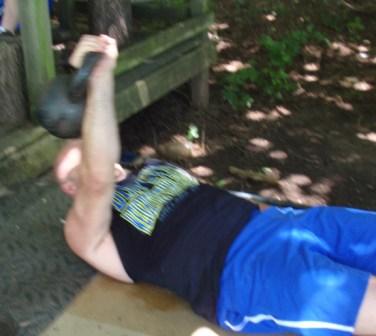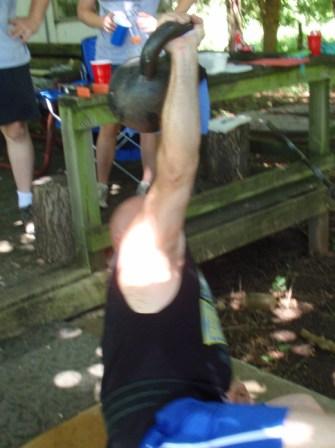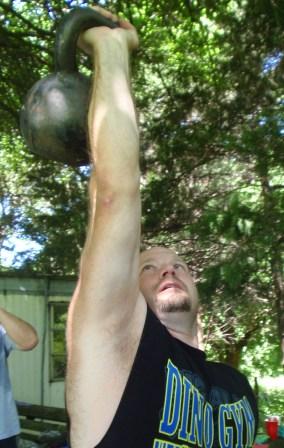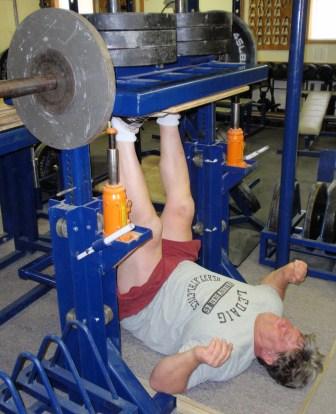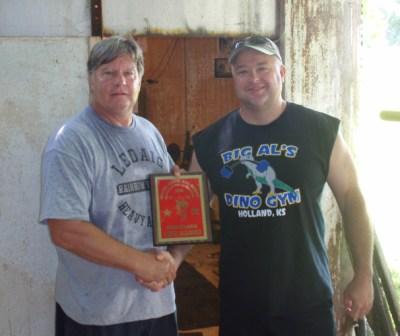One Tough Character – Mike Murdock
by Al Myers
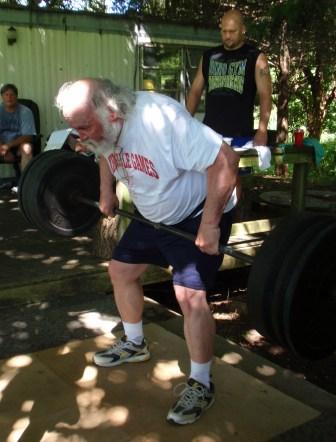
Mike Murdock, at 70 years of age, performing a record lift in the Bent Over Row with a lift of 205 pounds.
Last weekend at Dave’s Highland Games and Record Day, one person really stood out to me. That person was Mike Murdock. Mike is 70 years old and I know very few guys his age would have been able to withstand the rigors of last weekend. Dave picked the HOTTEST DAY of the summer for his weekend affair, and for those not familiar with the Kansas heat, don’t know what heat really is. It topped 100 degrees F (and with high humidity) on both days and EVERYTHING was done outside, including the lifting. Mike was there for both. He threw the entire day on Saturday and then returned to set a few USAWA records on Sunday. It didn’t seem like it fazed him one bit! Saturday night after the games, I asked Mike if he was coming back the next day, and he said, “Yep, and I’m going to be the first one to set a record in the Bent Over Row!” (this was in response to my BOLD statement last week in a story where I said I was going to be the first). Well, Amber Glasgow beat both of us to it the next day when she set the FIRST record in the Bent Over Row with a lift of 115 pounds. Of course, I remarked to Mike how he felt not being the first and he replied, “It’s ok, at least it wasn’t YOU!” That’s the spirit I like in All-Round Weightlifting between competitors! Everyone giving each other a hard time, but at the same time truly wishing your competitors the best of luck. Mike has been a long-time supporter of the events I have held at the Dino Gym. He is always there, and when he’ s not competing he’s helping out in some way. Mike Murdock is indeed ONE TOUGH CHARACTER!
